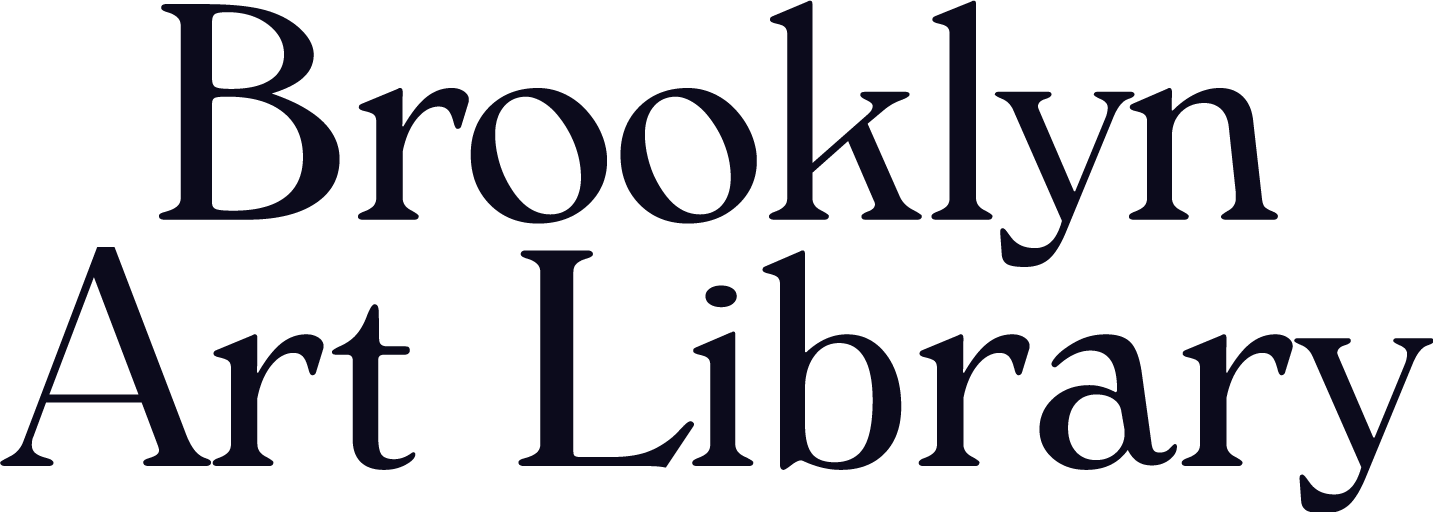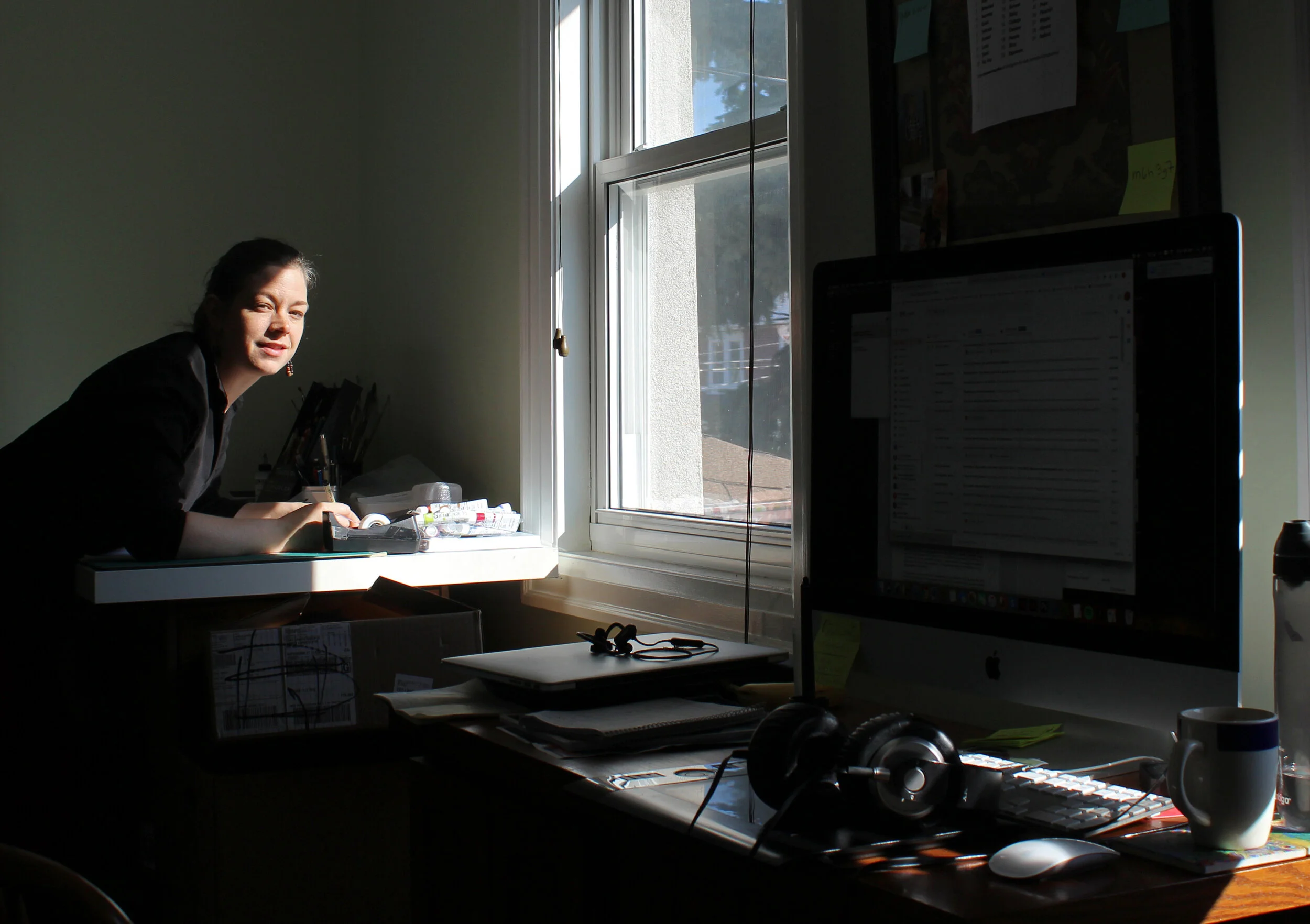Artwork From Home: Eleanor Rosenberg
Canadian native Eleanor Rosenberg was given the moniker, “The Mad Marker,” by her mother after creating a drawing with furious red-ink scribbles. Since then, Rosenberg has cultivated an award-winning career as an illustrator, creating pieces for The Globe and Mail, worked on a distracted driving campaign for Yukon Highways and Public Works, and provided the artwork for numerous other publications and creative organizations, including children’s book Vernon and the Snake. Rosenberg’s paintings are snapshots of everyday life on Bowen Island in British Columbia: a late-night game of soccer on a lush field, a child gleefully leaping between the seats of a ferry, a jogger pushing up a vibrant field of cranberries. Rosenberg’s sketchbook, “Dark Side of the Spoon,” which she completed at the beginning of the year, is abundant with intimate vignettes of motherhood and memories of familial bonds. You can follow Rosenberg’s art-making practice on Instagram and Facebook, as well as see previous projects on her website.
When did you first begin making art?
I’ve been drawing since I could wield a pencil. I grew up in a very rainy area, so drawing was a way to find adventure while sitting at the kitchen table.
What does your workspace look like now?
I have a home office. I feel fortunate that it has a door and enough space for two tables. One table is for digital drawing and design. It has my computer and drawing tablet. The other is used for painting and drawing in traditional mediums. It’s usually a mess, but since it’s a dedicated space, I can see everything, and it feels available at a moment’s notice—which is important.
How have present circumstances affected your creativity?
Oh man—it’s a struggle right now. I’m not going to lie. I’m grateful that I have a stable job and that I have deadlines that keep me drawing. On the other hand, time spent on my self-generated projects is sure taking a hit. My partner is also a creative, and we have a toddler, so every evening is both an internal struggle about how to best feed our souls and a parenting struggle about who gets to work on their projects. We had a full-time daycare before COVID times. So when 8PM rolls around, we’re both wondering—relax or create? Connect with one another or dive into our own work? Like I said before, I’m so grateful to have as much stability as I do. Things could be much harder.
Outside of my own time constraints, I’m excited about the creativity I’m seeing every day. From the surreal photography of urban spaces without people to the rewritten lyrics about the oddities of our day-to-day, even the crafting I see online, is impressive. The profound shift in perspective that we’re experiencing right now makes me giddy with the potential for creative expression.
What or who do you look to for inspiration?
I love Instagram for a daily dose of inspiration. In general, people and bodies fascinate me. I’ve always sought out life drawing sessions. I love the intersection of angles, colors, motion and pattern on a human figure.
I get really excited about new work by powerhouse illustrators Keith Negley, Tom Froese, and Lisa Congdon. And I love the portraiture of Margriet Aasman. For some classics, I’m a fan of Alex Coleville, Miroslav Šašek and Richard Scarry these days too.
How has illustrating influenced the way you see the world around you?
I compose and crop scenes from my daily life constantly. I love it, though sometimes it’s overwhelming because I want to capture on paper more of what I see and experience. Occasionally, I see my own history as a series of nostalgic images. For example, the birth of our child is like a visual essay in my mind—and on paper in a spread of my Sketchbook Project book!
What are some art-making materials you can’t live without?
Pens—just about any kind, though I do love a semi-thick black felt-nib. I’m not attached to a brand at the moment. A big stationary store used to carry my favorite pen but has since discontinued it. It was like a fine-liner, but a little rounder and thicker at the tip while still being firm. That was back in 2008 and life has never been the same. Sigh. Pigma Graphic 1 and Micron 05 is what I mainly use now.
Also, a gum eraser and a home scanner are essentials.
How do you make time for your art practice at home?
If I’m on a deadline, an early start is a good way to find energy and inspiration. I set my alarm for 6AM and try to be in the studio by 6:30AM for at least an hour before my family wakes up. Then again, I often find myself up until 1AM listening to dance music to make the work happen.
I typically work, alone though I would love to be in the company of others. I like being able to talk while doing less intensive brain work. I talk on the phone if I’m coloring or tracing images when I can.
Do you listen to or read anything while you work?
When I’m composing art which requires deep focus, I put on Angèle Dubeau for some classical energy. Once I get into a groove, I listen to podcasts. I could listen to Debbie Millman interviews on “Design Matters” all day. And I usually find time for The New York Times’s “The Daily” podcast and “This American Life.”
How do you get through creative blocks?
Deadlines. Either self-initiated or client-based. I usually break large projects down to smaller tasks with multiple deadlines. Or even don’t-pee-until-you’re-done mini deadlines.
What’s the best piece of art-making advice you ever received?
Spend more time looking at your reference than looking at your page.
I often think about this when creating realistic and figurative work, but I find it helpful for abstract work too. The longer I look at a reference—even if it’s a first iteration of my own work—always results in seeing relationships and compositional opportunities.
How can people support your work?
A simple message or comment on Instagram is a great support. I’m there every day and love being part of a creative community. For hired work, depending on the scope of the project, reaching out to the design firm where I’m the Creative Director is one way to collaborate. For contract illustration work, contact me directly through email. Otherwise, I also have a Society6 page for a selection of artwork on neat stuff.
Thanks for having me on the blog. It’s been a pleasure to reflect.




